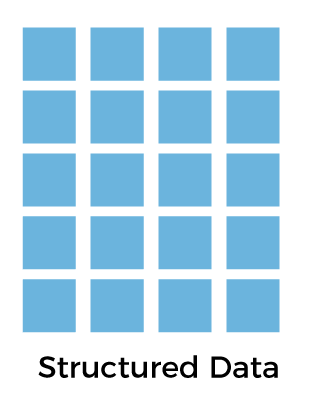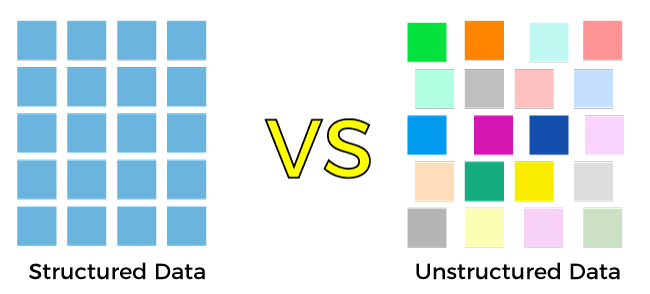Difference between Structured data and Unstructured dataThis article is going to be very important for the readers interested in Big Data. In this article, we will discuss two major types of Big Data: structured data, unstructured data, and the difference between them. Hope this article will be informative to you and give you sufficient information about structured data, unstructured data, and their comparison. We will try to make the article easy to read and understand. So, without any delay, let's start our topic. Before discussing the types of Big Data, let's see the brief description of Data and Big Data. What is Data?In general, data is a distinct piece of information that is gathered and translated for some purpose. Data can be available in different forms, such as bits and bytes stored in electronic memory, numbers or text on pieces of paper, or facts stored in a person's mind. What is Big Data?Big Data is defined as the Data which are very large in size. Normally, we work on data of size MB (WordDoc, Excel) or maximum GB(Movies, Codes), but data in Petabytes, i.e., 10^15 byte size, is called Big Data. It is stated that almost 90% of today's data has been generated in the past 3 years. Big data sources include Telecom Companies, Weather stations, E-commerce sites, Share market, and many more. Big Data can be structured, unstructured, and semi-structured that are being collected from different sources. Now, let's discuss Structured Data and Unstructured Data. Structured DataThe data which is to the point, factual, and highly organized is referred to as structured data. It is quantitative in nature, i.e., it is related to quantities that means it contains measurable numerical values like numbers, dates, and times. 
It is easy to search and analyze structured data. Structured data exists in a predefined format. Relational database consisting of tables with rows and columns is one of the best examples of structured data. Structured data generally exist in tables like excel files and Google Docs spreadsheets. The programming language SQL (structured query language) is used for managing the structured data. SQL is developed by IBM in the 1970s and majorly used to handle relational databases and warehouses. Structured data is highly organized and understandable for machine language. Common applications of relational databases with structured data include sales transactions, Airline reservation systems, inventory control, and others. Unstructured DataAll the unstructured files, log files, audio files, and image files are included in the unstructured data. Some organizations have much data available, but they did not know how to derive data value since the data is raw. 
Unstructured data is the data that lacks any predefined model or format. It requires a lot of storage space, and it is hard to maintain security in it. It cannot be presented in a data model or schema. That's why managing, analyzing, or searching for unstructured data is hard. It resides in various different formats like text, images, audio and video files, etc. It is qualitative in nature and sometimes stored in a non-relational database or NO-SQL. It is not stored in relational databases, so it is hard for computers and humans to interpret it. The limitations of unstructured data include the requirement of data science experts and specialized tools to manipulate the data. The amount of unstructured data is much more than the structured or semi-structured data. Examples of human-generated unstructured data are Text files, Email, social media, media, mobile data, business applications, and others. The machine-generated unstructured data includes satellite images, scientific data, sensor data, digital surveillance, and many more. Structured data v/s Unstructured data
Let's see the comparison chart between structured and unstructured data. Here, we are tabulating the difference between both terms based on some characteristics.
Next TopicDifference between
|
 For Videos Join Our Youtube Channel: Join Now
For Videos Join Our Youtube Channel: Join Now
Feedback
- Send your Feedback to [email protected]
Help Others, Please Share









